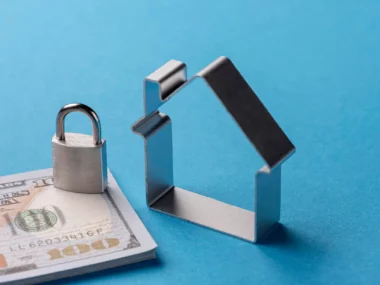Table of Contents
You won’t always have the financial capability to cater for every single expense that comes your way, which means sometimes you need a little help from loan lenders who grant you loans and charge interest on them.
In some cases, due to circumstances that are beyond your control, you may find it hard to pay back these loans, which might lead to an accumulation of huge debt over time.
Once you find yourself in this kind of situation, the best financial solution is to consolidate these loans, i.e. merge them into one so you will have to stop making multiple monthly payments and paying numerous (high) interests.
Whether you have heard about consolidation loans in Canada before or you are learning about it for the first time, there is no doubt that you have a lot of questions regarding how it works, and how you can use it to get yourself out of your current situation.
Why don’t you continue reading Consolidation Loans in Canada: All you need to know so you can have all your questions answered in detail?
What is a Consolidation Loans in Canada?
This is a debt repayment plan that allows you to unify two or more debts into a single monthly payment. This helps the borrower to merge all his debt into one with a set interest rate.
This loan is mostly used to settle unsecured, high-interest debts like credit cards and payday loans.
Debt consolidation loans often have low interest rates which gives the borrower the advantage of making lower monthly payments.
How it works is that, you get a huge loan from a lender and then use it to settle all your existing debts, and since the the loan will come with a low interest rate, paying it back won’t be too stressful.
Consolidation loans are granted by banks, credit unions, and online lenders.
See another perspective of loans in Canada.
These loans may be secured or unsecured:
Secured debt consolidation loan: This type of consolidation loan requires a borrower to provide one or more assets such a house, a car, and so on, to be used as collateral. This loan is usually easy to get since there is a collateral involved, and the interest rate is often low.
Unsecured debt consolidation loan:
This type of consolidation loan doesn’t require a collateral, which is why they tend to have higher interest rates compared to a secured consolidation loan.
How Consolidation Loans are granted
After your consolidation loan has been approved, the lender either uses the money to settle all your existing debts or deposit it in your bank account, so you can settle your debts by yourself.
Upsides of Loan Consolidation
As great as loan consolidation is as a solution to one’s debt problem, it is pertinent to understand that it has its upsides and downsides.
1. One of its many upsides is that once you consolidate your loans, you’ll start making lower monthly payments. This is due to the low interest rate that will apply to the loan.
2. It improves your credit score at the long run.
3. You only have to make one monthly payment.
4. You’ll be able to keep better track of your debt if it is all in one place.
5. The repayment terms for consolidation loans are usually flexible.
6. You’ll be able to repay all your debts in full.
Downsides of Loan Consolidation
1. If you opt for a long-term repayment plan, you may end up paying a lot more than you bargained for.
2. It usually requires a good credit score.
3. It often requires a collateral.
4. If you get an unsecured debt consolidation loan, you’ll have to pay a high inferst rate.
When is Loan Consolidation a good idea?
There are different situations where loan consolidation becomes the only logical solution to one’s debt problem. Let’s take a look at some of them:
1. When you have taken so many payday loans to settle a lot of expenses, and paying them back is now almost impossible, you should consider consolidating them.
2. When you have racked up serious credit card debts, and your monthly income isn’t enough to settle them.
3. When you’ve been using a line of credit to pay your debts for a long time.
4. When you have high-interest debts.
5. When your monthly payments are very high, which is making you fall behind on your payments.
6. When multiple debts are starting to ruin your credit.
7. When the cost of living has risen and you can no longer afford to cover all your debts.
8. When you have a lot of debts that you’re finding it hard to keep track of all of them.
Other Debt Consolidation Options
At this point, it has been established that consolidating your debts can help you get out of a difficult financial situation very quickly. However, consolidation loans are not the only option that you can use. Here are some other options:
Credit Card Balance Transfers
If you have debts on multiple credit cards and you’re struggling with repayment, a fast way of resolving this is by combining the balances on those cards onto one credit card which will have a lower interest rate.
Upsides
- You’ll have a low interest rate.
- The payment plan is flexible.
Downsides
- The interest rate may eventually rise.
- You’ll need to be eligible before you can use this option.
Debt Consolidation Programme
This is a program where a non-profit credit counselling agency dialogues with your creditors to merge all your payments into a single monthly payment that is affordable for you, with very little or no interest.
Upsides
- You will have a credit counsellor who will serve as a guide and support during the process.
- Your interest rate will either be reduced or completely removed.
- You’ll be able to get out of debt faster.
- You only have to make one monthly payment.
Downsides
- It might not include all the debts that you owe.
- There is a nominal fee.
- It could eventually have a negative impact on your credit score.
- You will have to give up your credit cards during the process.
Home Equity Line of Credit (HELOC)
You can use your home equity to borrow a huge loan from a lender, and use that loan to clear all your debts at once. Of course, this depends on how much equity you have in your home.
Upsides
Since it’s a secured loan, the interest rate is usually low.
There is often a flexible repayment plan.
You only have to pay interest on the money that you borrowed.
Downsides
You may not have enough equity in your home to borrow a sufficient amount.
You may lose your home if you fail to pay back the loan.
Consolidating Student Loans in Canada
This is when a borrower applies to unify numerous federal student loans into a single, new loan through the Department of Education. This helps borrowers to reduce their monthly payments and get a repayment plan that is more suitable for them. The interest rate on the new loan, known as a consolidation loan will be a weighted average average of the rates on the borrower’s existing debts.
This option is only available for federal student loans.
Benefits of Consolidating Student Loans
- You will start making lower monthly payments.
- Borrowers who would normally not qualify for loan forgiveness programs can qualify if they comsolidate their student loan.
- It gives you the opportunity to change your federal student loan servicer, especially if you’ve been having issues with the current one.
- Instead of making multiple monthly payments, you will start making only one monthly payment.
- If you have any student loan that you have defaulted on, consolidating your student loans can help you to pay it off.
- You will be able to manage your debt better.
- You will have enough time to pay back your loans.
Drawbacks of Consolidating Student Loans
- If you have a long repayment term, your interest rate will be lower but it also means you will be paying more interest in the long run.
- If you consolidate your federal loans with a private refinanced loan, you will lose the benefits that come with federal loans.
- The existing interest on individual loans doesn’t go away, instead, they become part of the consolidated loan principal.
- It only applies to federal loans.
How to consolidate student loans in Canada
- Log on to your Federal Student Aid Account.
- Get all the needed documents.
- Fill out a Consolidation Loan Application.
- Continue making payments on the individual loans while you await approval for your consolidation loan.
- Get approval and start making repayments on the consolidation loan.
Refinancing Student Loans in Canada
This is similar to consolidating student loans, except that while the other option only allows you to consolidate federal student loans, Refinancing allows you to consolidate both federal and private student loans.
Student Loan Refinancing is when a private lender settles your existing student loans and then gives you a new one with a new and lower interest rate, monthly payment amount, and repayment term. This can be done through a bank, a credit union, or an online lender.
It is important to note that once you refinance a federal student loan, it becomes a private loan, which means the benefits that accompany federal loans no longer applies to it.
To get a good interest rate here, you would be required to have a credit score of at least 600, and if you don’t, you can always use a co-signer who has a better credit score.
Benefits of Refinancing Student Loans
- You will have a lower monthly payment.
- You will get a lower interest rate.
- Rather than paying off multiple student loans, you will only be paying one.
- It applies to both federal and private loans.
- You have an extended repayment term.
Drawbacks of Consolidating Student Loans
- No access to federal loan protections such as loan forgiveness programs.
- Getting a good interest rate rests greatly upon having a good credit score.
How to Refinance Student Loans in Canada
- The first step is to find a student loan refinance lender with terms that meet your needs.
- Ensure to get multiple offers so you can compare before picking a lender.
- Pick a lender and iron out the repayment terms.
- Fill out an application with the lender.
To sum up:
Consolidation Loans have always helped people get out of debt, through the numerous benefits that they provide to borrowers. However, to avoid making your situation worse, ensure to assess your financial needs and peruse offers from lenders before making a decision.
We hope this great article on Consolidation Loans in Canada: All you need to know will help you.






